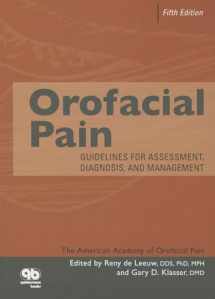
Orofacial Pain: Guidelines for Assessment, Diagnosis, and Management
Book details
Summary
Description
The AAOP Guidelines for Assessment, Diagnosis, and Management of Orofacial Pain is an invaluable resource for all health care professionals who evaluate and treat patients with orofacial pain and face the daunting task of keeping up with the literature in the rapidly emerging arena of pain management in clinical practice. This new edition continues to emphasize evidence-based knowledge and, for the first time, offers a summary of key points at the beginning of each chapter. Other important changes include an entirely new chapter on sleep and its relationship to pain and well-being; new imaging guidelines for the diagnosis of headache, TMD, and neuropathic pain; a new section on dysesthesias related to neuropathic pain; comprehensive descriptions of SUNCT/SUNA in the chapter devoted to primary headache disorders; and recommendations for quantitative sensory testing, narcotic agreement, and brief screening questionnaires used in patient assessment. Most important, the differential diagnosis and TMD chapters reflect the recommendations of the long-awaited RDC/TMD taxonomy, which will have a significant impact on clinical practice.


We would LOVE it if you could help us and other readers by reviewing the book
Book review



